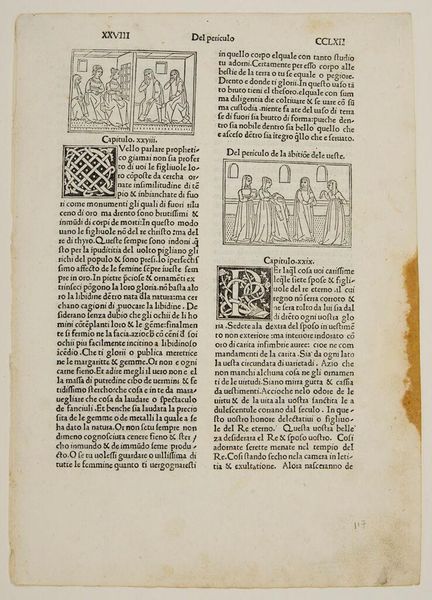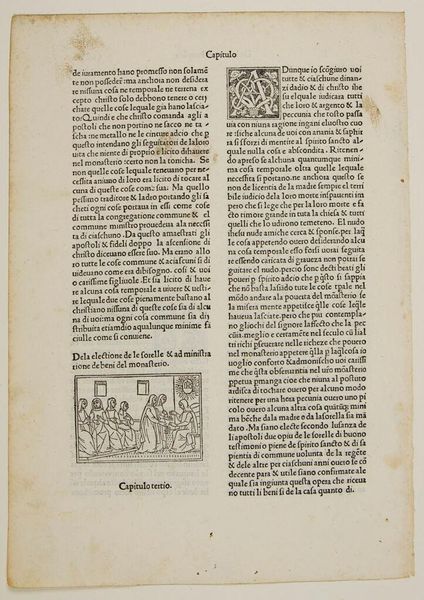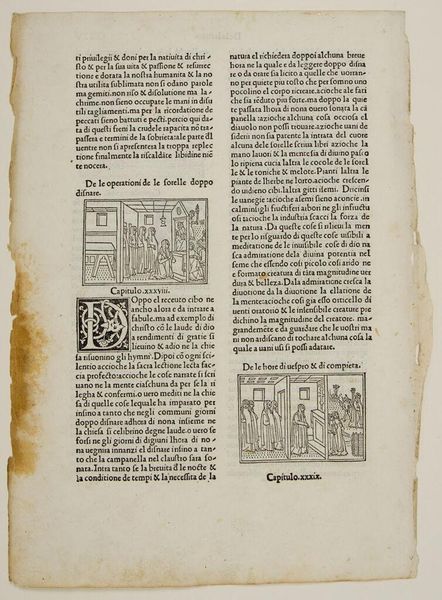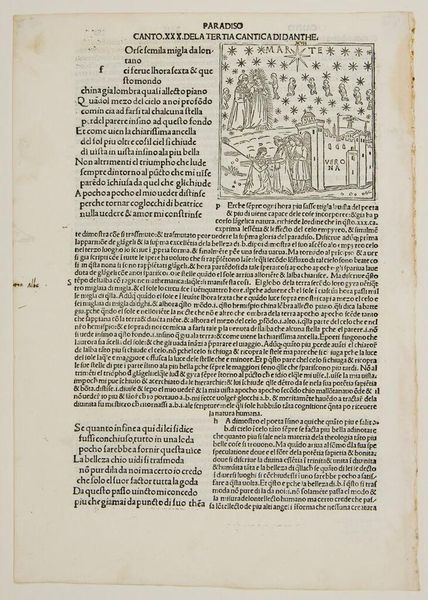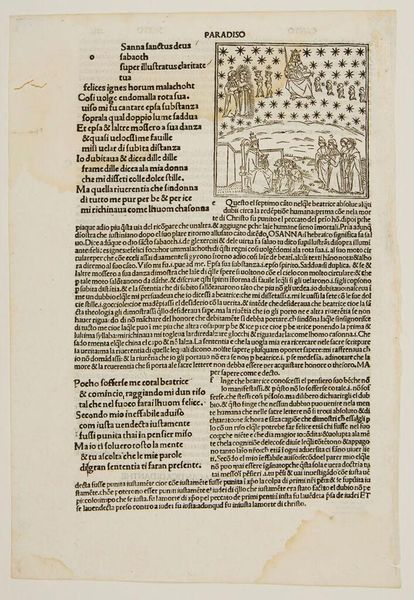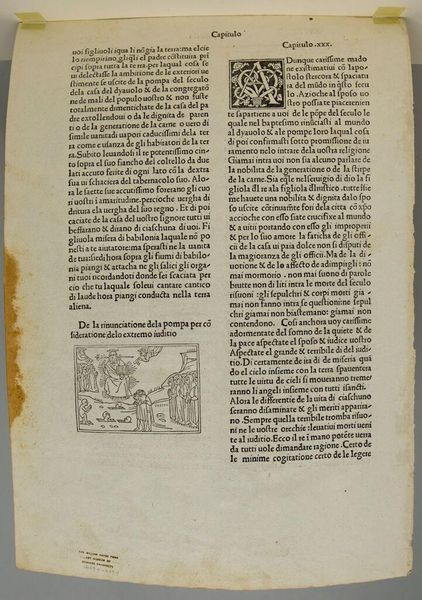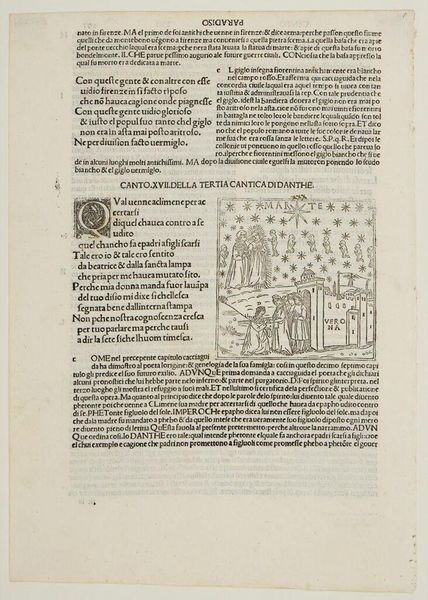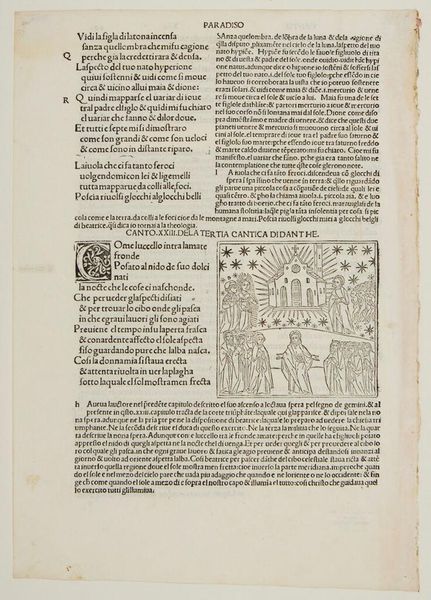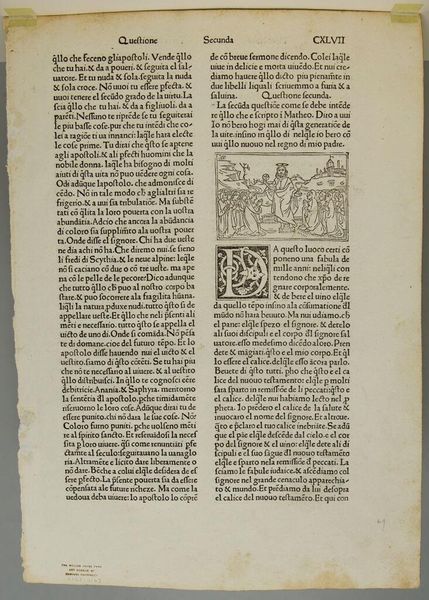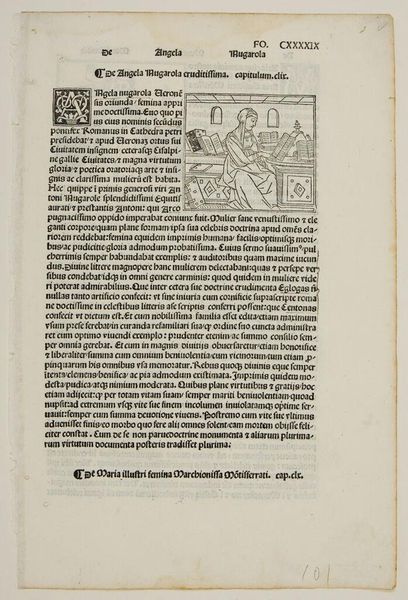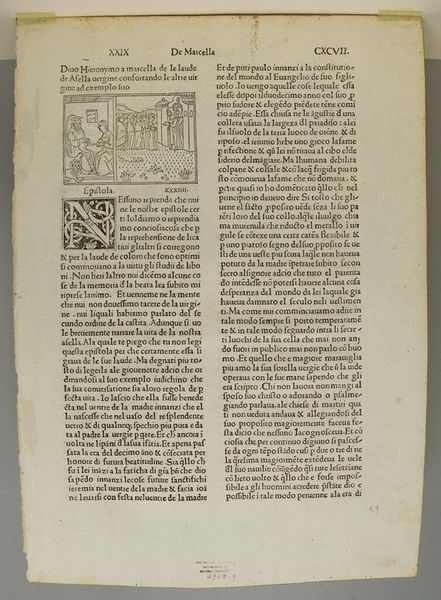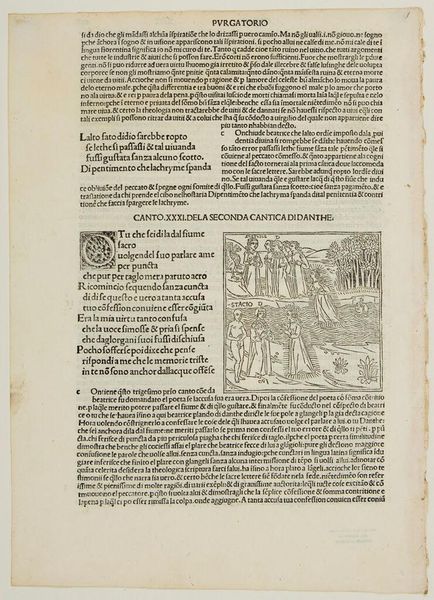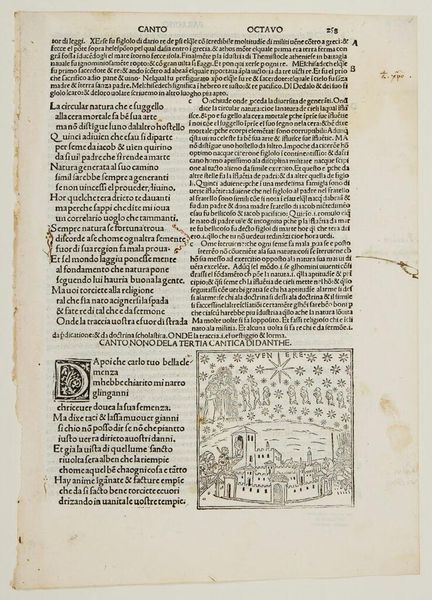
Copyright: CC0 1.0
Curator: Here we have a page showcasing a decorative initial box, part of a larger collection at the Harvard Art Museums. It's an anonymous work, its precise date unknown. What strikes you about it? Editor: It's haunting. The stark black ink on aged paper, the almost claustrophobic density of the text, the somber religious themes depicted in the illustrations... it all contributes to this sense of medieval piety and the fear of the unknown. Curator: Indeed. Text and image were strategically combined, reinforcing the socio-political and religious climate during the inception of printing. Look closely at the initial box itself, a dense pattern, almost a labyrinth, meant to draw the reader in but also to symbolize the complexities of faith. Editor: I see a clear connection between the detailed imagery and the overarching themes of sin, penance, and spiritual reflection. The illustrations serve as visual aids, reinforcing moral lessons and solidifying the power structures of the time. Curator: Precisely. This wasn't just decoration; it was a tool for reinforcing societal norms. Considering our contemporary lens, it speaks volumes about the role of imagery in shaping public perception and perpetuating specific ideologies. Editor: Absolutely. It’s a potent reminder of the power dynamics inherent in visual culture. Examining this page allows us to reflect on how similar dynamics play out in our own era, shaping our beliefs and behaviors.
Comments
No comments
Be the first to comment and join the conversation on the ultimate creative platform.
